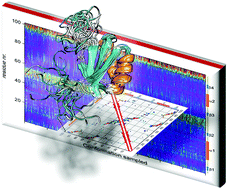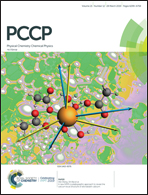Design of a structure-based model for protein folding from flexible conformations†
Abstract
The use of coarse-grained models is important in many fields, especially those that use computer simulation to analyze large systems in processes that span long-time scales, as happens in protein folding. Among those approaches, structure-based models have been widely and successfully used for a few decades now. They usually take a single native conformation, experimentally solved, of the protein studied to determine the native contacts, which subsequently define the interaction potential for the simulation. The characteristics of the folding transition can then be analyzed from the computed trajectories. In this paper, we consider the possibility of enriching these models by considering the structural fluctuations present in the native state of a globular protein at room temperature in an aqueous environment. We use the different conformers experimentally provided when the protein structure was determined by nuclear magnetic resonance (NMR) spectroscopy as an approximate ensemble to test our methodology, which includes the definition of a global interaction potential and the analysis of the thermodynamic and structural characteristics of the folding process. The results are compared with traditional, single structure models.



 Please wait while we load your content...
Please wait while we load your content...